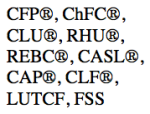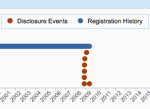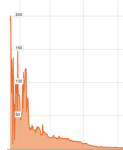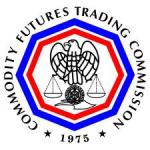If you and your drunk college friends were charged in 1989 for swiping a Bob’s Big-Boy statue and putting it on the 50-yard line, chances are you look back now and chuckle at your youthful indiscretion. That is, unless you are a financial advisor, in which case your public BrokerCheck report carries a constant reminder of this ancient incident: 1989 Felony Charge, Grand Larceny. BrokerCheck never forgets and it errs on the side of disclosure.
The idea is to protect investors by providing background information on financial advisors. In addition to criminal matters, BrokerCheck tracks and publicizes customer complaints, customer lawsuits, regulatory actions and reasons for certain employment terminations (reported on Finra Form U5). Criminal disclosures often relate to mere charges, can be described in embarrassing language and are difficult to remove — a situation parodied with some humor here. This issue may soon become more acute: FINRA proposed a requirement that advisors add a reference and a link to their BrokerChecks on their business websites (currently the reports are available only on FINRA’s website).
![]() In addition, there are BrokerCheck reports on the broker-dealer firms themselves. These contain descriptions of regulatory actions by state and federal securities regulators and prosecutors. They also describe lawsuits, most of which were brought by investors in mandatory arbitration proceedings. As with financial advisors, the idea is to provide information to help investors compare broker-dealers. But investors wishing to compare broker-dealers based upon their BrokerChecks have a truly absurd task ahead of them.
In addition, there are BrokerCheck reports on the broker-dealer firms themselves. These contain descriptions of regulatory actions by state and federal securities regulators and prosecutors. They also describe lawsuits, most of which were brought by investors in mandatory arbitration proceedings. As with financial advisors, the idea is to provide information to help investors compare broker-dealers. But investors wishing to compare broker-dealers based upon their BrokerChecks have a truly absurd task ahead of them.
Consider the following statistics from the respective BrokerChecks of (1) Bank of America-Merrill Lynch, (2) UBS, (3) Morgan Stanley, (4) Goldman Sachs, and (5) JPMorgan Chase.
| Regulatory Events | Arbitrations | Pages of Disclosures | |
|
Merrill Lynch |
432 |
987 | 1275 |
|
UBS |
387 | 387 | 793 |
|
Morgan Stanley |
322 | 45 |
598 |
|
Goldman Sachs |
244 | 14 |
429 |
|
JPMorgan |
185 | 135 |
422 |
…
How does a savvy investor go about comparing these? Think of the possibilities. Sheer number? How about the number of violations compared to the number of financial advisors, or to the number of customers, or to assets under management? Or how about qualitatively? Whose disclosures are worse? Perhaps we could assign values to each disclosure based upon the severity of the possible wrongdoing (including fines and arbitration awards paid) and then tally them up. This would be a daunting task, even for a law professor with free student labor. It is hard to picture investors doing this. Most investors probably never look at the disclosures.
This is not true, however, for BrokerChecks on individual financial advisors. BrokerCheck disclosures can and do deter investors, potential employers and potential business partners. Advisors wishing to remove ugly or unfair disclosures from their reports have met with significant resistance from FINRA, which typically objects to attempts to “expunge” disclosures from the reports.
The California Court of Appeal recently entered the expungement debate with an opinion that is surprisingly emphatic in its insistence that justice must be done. Ruling against FINRA, it held that a court must apply its own conscience and weigh the equities favoring expungement against the detriment to the public should expungement be granted. Here is some background on this case, with a small diversion to have a look at the unintentionally humorous website known as “Investor Recovery Service.”
Edwin Lickiss has an Unpleasant Encounter with Investor Recovery Service.
Financial advisor Edwin Lickiss has 17 customer arbitration suits and a regulatory action on his BrokerCheck. Thirteen of these cases stem from 20-year-old brokerage sales of stock in a company that went bankrupt. Unfortunately for Lickiss, an outfit called “Investor Recovery Service” got involved. The Court of Appeal explains:
According to Lickiss, in at least 12 of the 17 arbitration claims, clients were represented by Richard Sacks, a nonattorney who ran an “investor recovery” service in the Bay Area in the mid–1990’s. Prior to this career, Sacks was the subject of over $479,000 in securities regulatory fines and was eventually barred from the industry. Sacks’s operating method was to affirmatively contact investors and incite them to sue Lickiss.
Curious about the status of Mr. Sacks, I looked him up on Google and found his website, still known as Investor Recovery Service. The site contains many pages of energetic marketing directed at potentially wronged investors. It also contains a humorous example of a failed attempt to use the “find and replace” command. It appears that when the NASD and certain NYSE functions merged to form FINRA in 2007, the folks at Investor Recovery Service thought it would be expedient to revise their website content by using a “find and replace” command to replace all instances of “NASD” with “FINRA.” This is evident by the website’s constant awkward references to “The FINRA,” as in this sentence:
The problem is that the public erroneously believes the FINRA will protect them and in truth, that is not what the FINRA always does.
That is awkward enough, but here’s my favorite sentence:
FINRA stands for National Association of Securities Dealers.
This is literally the first sentence on a page entitled: “The Finra and its Role in Securities Arbitration.” Does anyone know a good copy editor? On second thought, even a bad copy editor will do.
Anyway, Lickiss filed suit in California state court seeking expungement of his BrokerCheck. As authority, he relied on FINRA Rule 2080 which governs court expungement and on “the Court’s equitable and inherent powers to effectuate expungements.” He argued that the customer suits were ancient history, that his record has since remained clean, and that most of the customer claims related to a single security which he brokered for an ordinary commission and he had no control over the success of the investment.
Things got interesting when the lower court tried to apply FINRA Rule 2080, which allows information to be expunged if the financial advisor obtains “an order from a court of competent jurisdiction directing such expungement.” The rule requires the financial advisor to name as a party the FINRA — sorry — to name FINRA (so it can oppose the request) unless FINRA elects to “waive” being named. The rule explains:
(1) Upon request, FINRA may waive the obligation to name FINRA as a party if FINRA determines that the expungement relief is based on affirmative judicial or arbitral findings that: (A) the claim, allegation or information is factually impossible or clearly erroneous; (B) the registered person was not involved in the alleged investment related sales practice violation, forgery, theft, misappropriation or conversion of funds; or (C) the claim, allegation or information is false.
FINRA argued that the three tests above for when FINRA will waive being named should be used by the court as the substantive standard for whether an expungement is proper. That is, the court must find that: (1) the allegations are “clearly erroneous,” or (2) the advisor was “not involved,” or (3) the allegation is “false.” The lower court agreed to apply this standard and dismissed the case because Lickiss could not allege that he satisfied any of the three factors. Lickiss appealed.
The California Court of Appeal reversed. It held that Rule 2080 only governs when FINRA will waive being named in the suit — it provides no substantive standard for the court to apply in deciding whether to grant an expungement. Further, said the Court of Appeal, the lower court should have applied its own inherent equitable powers. Failure to do this really seemed to irritate the Court of Appeal’s sense of justice:
The choice of a very narrow, rigid legal rule to assess the legal sufficiency of Lickiss’s petition—a choice that closed off all avenues to the court’s conscience in formulating a decree and disregarded basic principles of equity—was nothing short of an end run around equity.
The Court of Appeal remanded the case so that the lower court could: “weigh the equities favoring expungement against the detriment to the public should expungement be granted.” The holding is remarkable for how emphatically the Court of Appeal insists that the court’s conscience be applied. Thus, under a heading entitled “Guiding Principles,” we find this soaring, uplifting language:
Equity aims to do right and accomplish justice. . . . “ ‘Equity or chancery law has its origins in the necessity for exceptions to the application of rules of law in those cases where the law, by reason of its universality, would create injustice in the affairs of men.’”. . . Equity therefore will assert itself in situations where right and justice would be defeated but for its intervening. . . . The equitable powers of a court are not curbed by rigid rules of law, and thus wide play is reserved to the court’s conscience in formulating its decrees. These powers are broad enough to address novel conditions and meet the requirements of every case. . . . In other words, equity recognizes that we live in a changing world and equitable remedies are flexible, capable of expanding to meet the increasing complexities of these changing times. Inflexible rules are not permitted to curtail the power of equity to accomplish justice. . . . Our Supreme Court reminds us that courts cannot properly exercise equitable powers without considering the equities on both sides of a dispute. . . . This basic principle of equity jurisprudence means that in any given context in which the court is prevailed upon to exercise its equitable powers, it should weigh the competing equities bearing on the issue at hand and then grant or deny relief based on the overall balance of these equities. (Citations omitted).
If you are a financial advisor who feels plagued by unfair BrokerCheck entries, this seems like promising stuff. It invites arguments premised on basic fairness. If a disclosure is, for whatever reason, mostly useless to an investor, but damaging to a financial advisor, perhaps it should come off. It remains to be seen whether Lickiss satisfies this test. Going forward, we can expect to see disputes in other courts centering on whether to apply Rule 2080’s standards or an equitable principle. We might also ultimately see a new rule that clearly sets forth the substantive standard for a court to apply. FINRA has already been busy attempting to improve other aspects of the expungement process. Thus, for example, FINRA issued a proposed rule to allow financial advisors who are not named as respondents in arbitrations, but who are deemed to be “involved” in the matter for BrokerCheck reporting purposes, to file an in re proceeding with FINRA seeking expungement of the matter. SIFMA wrote a comment letter proposing that it be extended to all written customer complaints and civil litigation, not just arbitrations. Perhaps an efficient procedure for expunging criminal disclosures could be addressed as well.
 Although the Lickiss case did not involve criminal disclosures, it would be tempting for the the now-graying fraternity boys charged with the Big-Boy heist to appeal to the same logic. Is a 23-year old college prank gone wrong really the sort of charges an investor needs to know about? Is this fair to the financial advisor? Some may feel that at some point a financial advisor should be permitted to chuckle at a youthful indiscretion and no longer be constantly reminded of it and burdened to explain it.
Although the Lickiss case did not involve criminal disclosures, it would be tempting for the the now-graying fraternity boys charged with the Big-Boy heist to appeal to the same logic. Is a 23-year old college prank gone wrong really the sort of charges an investor needs to know about? Is this fair to the financial advisor? Some may feel that at some point a financial advisor should be permitted to chuckle at a youthful indiscretion and no longer be constantly reminded of it and burdened to explain it.
Published by Jeremy L. Bartell
 Financially Regulated is published by Jeremy L. Bartell, a long-time admirer of Wall Street and its interesting cast of regulators. Jeremy is an attorney with Bartell Law in Washington D.C. He represents financial professionals nationwide in Finra inquiries and investigations, Finra arbitration, securities employment disputes and registration and disclosure matters.
Financially Regulated is published by Jeremy L. Bartell, a long-time admirer of Wall Street and its interesting cast of regulators. Jeremy is an attorney with Bartell Law in Washington D.C. He represents financial professionals nationwide in Finra inquiries and investigations, Finra arbitration, securities employment disputes and registration and disclosure matters.
























Great article that highlights a personal battle that I’m going through. When I was 18 years old (I’m currently 37), I was a passenger in a car that was pulled over for speeding. The driver had about an ounce of marijuana stuffed in a backpack in the car. The police searched the car and the driver claimed it was not his, as did everyone else in the vehicle. They charged us all with possession with the intent to distribute – a felony. The charges were dropped, but still, to this day, the criminal disclosure remains on my Brokercheck report. I work for an RIA now and haven’t been FINRA-registered since 2006, and it was my understanding that this would “fall off” after 10 years of non-employment with a broker. Will the new SEC-FINRA brokercheck database stop this from happening? Thanks in advance.